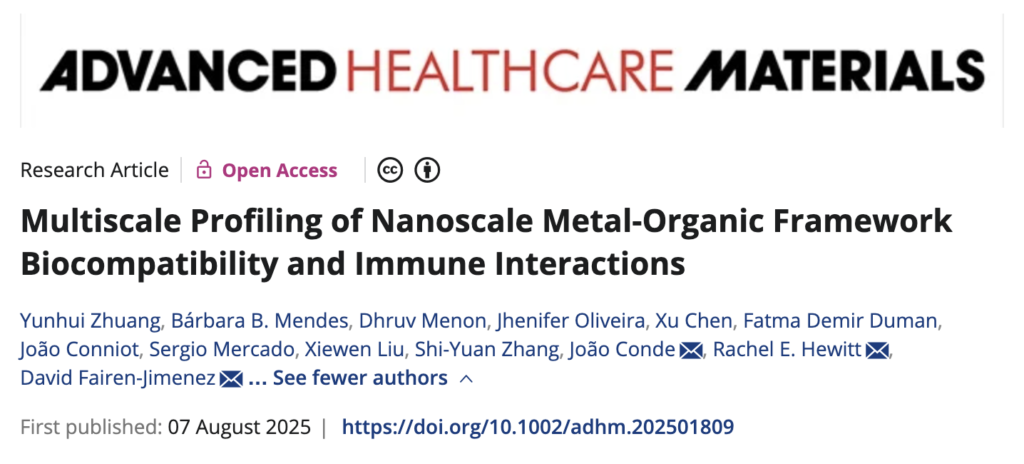At Vector Bioscience Cambridge, we work in close collaboration with Prof. David Fairen-Jimenez’s research group at the University of Cambridge. Together, we build on their discoveries to translate nanomedicine research into clinical and commercial impact. This partnership creates synergies between academic innovation and real-world application, accelerating the path from concept to patient benefit.
Our latest joint work, published in Advanced Healthcare Materials, focuses on the safety profiling of metal–organic frameworks (MOFs) – highly customisable nanomaterials with significant potential in targeted drug delivery. The study was carried out by Prof. Fairen-Jimenez’s team in collaboration with Rachel E. Hewitt’s group at the University of Cambridge and Prof. João Conde’s group at Universidade Nova de Lisboa.
The objective was to establish a validated “Safety-by-Design” pipeline for assessing MOFs intended for biomedical use. This involved combining:
- Machine learning to predict immune responses based on structural and physicochemical properties
- Experimental human blood assays to measure immune activation in vitro
- In vivo models to confirm biological compatibility and safety profiles
By integrating these approaches, the team was able to map framework-specific immune responses and identify MOFs with the highest potential for safe clinical development.
The conclusions of this work are clear: early-stage, systematic safety assessment can help de-risk nanomedicine pipelines, guide material selection, and accelerate translation into clinical settings. For oncology, where targeted delivery and controlled release are critical, such a pipeline is essential for the development of safe and effective treatments.
At Vector Bioscience Cambridge, these findings directly support the optimisation of our drug delivery platform, enabling us to select and engineer it with safety and performance in mind from the outset. This work strengthens our ability to design novel oncology treatments that combine precision targeting with biocompatibility.
The full paper is available in Advanced Healthcare Materials here.


